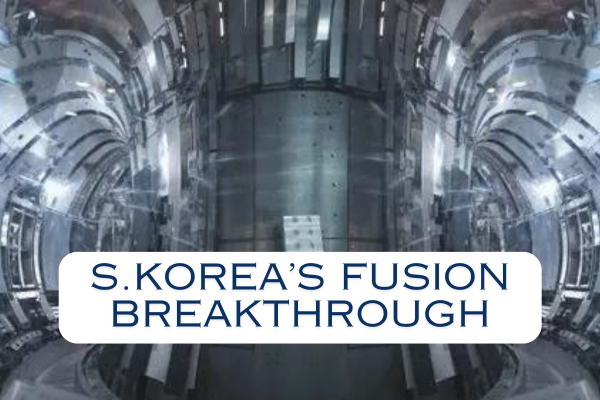South Korea’s KSTAR has once again demonstrated significant progress in nuclear fusion technology as the Korea Superconducting Tokamak Advanced Research (KSTAR) reactor set a new global record by sustaining a plasma loop at a temperature of 100 million degrees Celsius for 48 seconds. This achievement surpasses KSTAR’s own previous record of 31 seconds set in 2021 and marks an incremental advance in the quest for unlimited clean energy.
Nuclear fusion, the process that powers stars, involves the fusion of hydrogen atoms into helium under extreme conditions, releasing vast amounts of energy without the byproducts of greenhouse gases or long-lasting radioactive waste. However, mimicking these stellar conditions on Earth presents immense challenges. The tokamak, a donut-shaped fusion device, heats plasma—a state of matter composed of charged particles—to extreme temperatures while containing it with robust magnetic fields.
The first tokamak was introduced by Soviet scientist Natan Yavlinsky in 1958, and since then, the challenge has been to maintain the hot plasma long enough for sustained nuclear fusion. Achieving and controlling the necessary high temperatures, far exceeding those at the core of the sun, in a low-pressure environment remains a significant technical hurdle.
In their latest experiment, the KSTAR scientists made crucial modifications to their reactor’s design, such as replacing carbon components with tungsten in the tokamak’s divertors, which handle the extraction of heat and residual materials. This adjustment contributed to the extended duration of plasma containment, a critical factor in fusion reactions.
Si-Woo Yoon, director of the KSTAR Research Center, highlighted the success of the reactor under the new conditions facilitated by the tungsten divertors. Despite being the first trial with these adjustments, the reactor achieved unprecedented results. Looking ahead, KSTAR aims to maintain plasma temperatures of 180 million degrees Fahrenheit for up to 300 seconds by 2026.
This development is part of a broader global effort in fusion research, including significant results from other reactors like the U.S. National Ignition Facility, which recently achieved a net energy gain.





